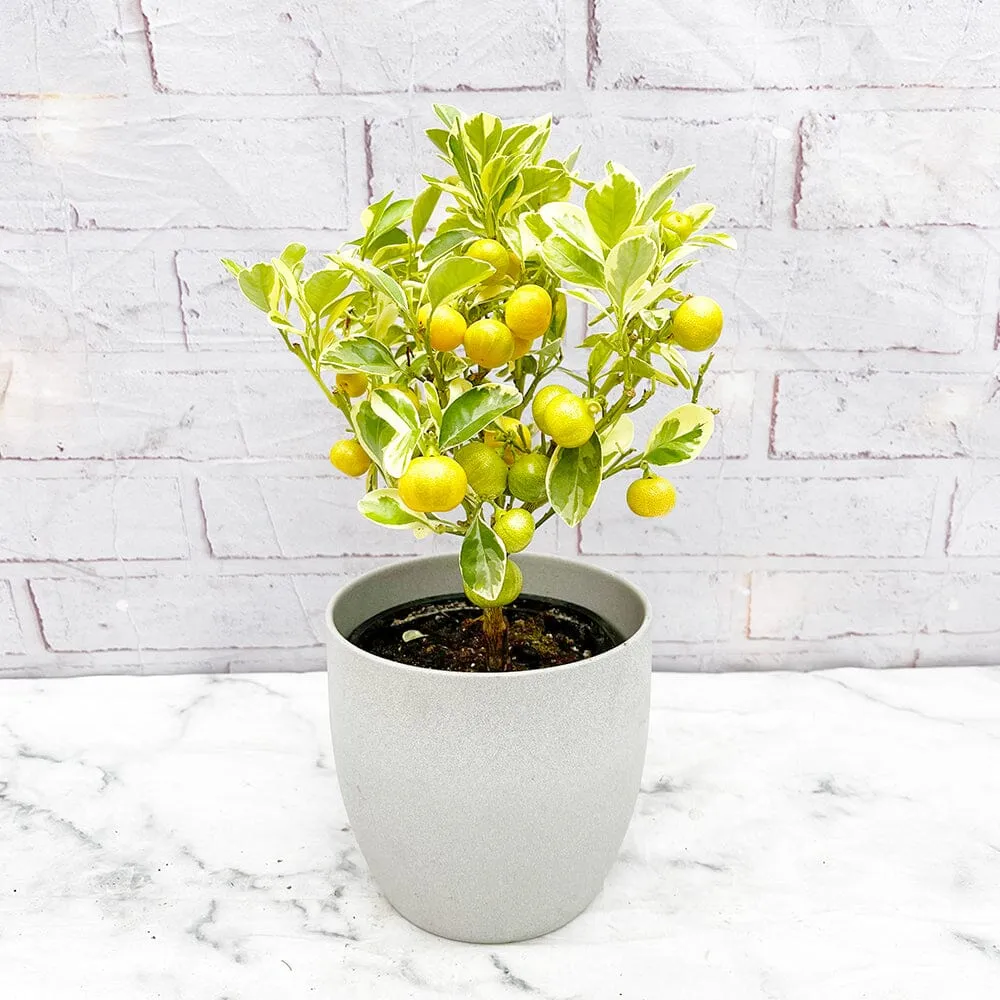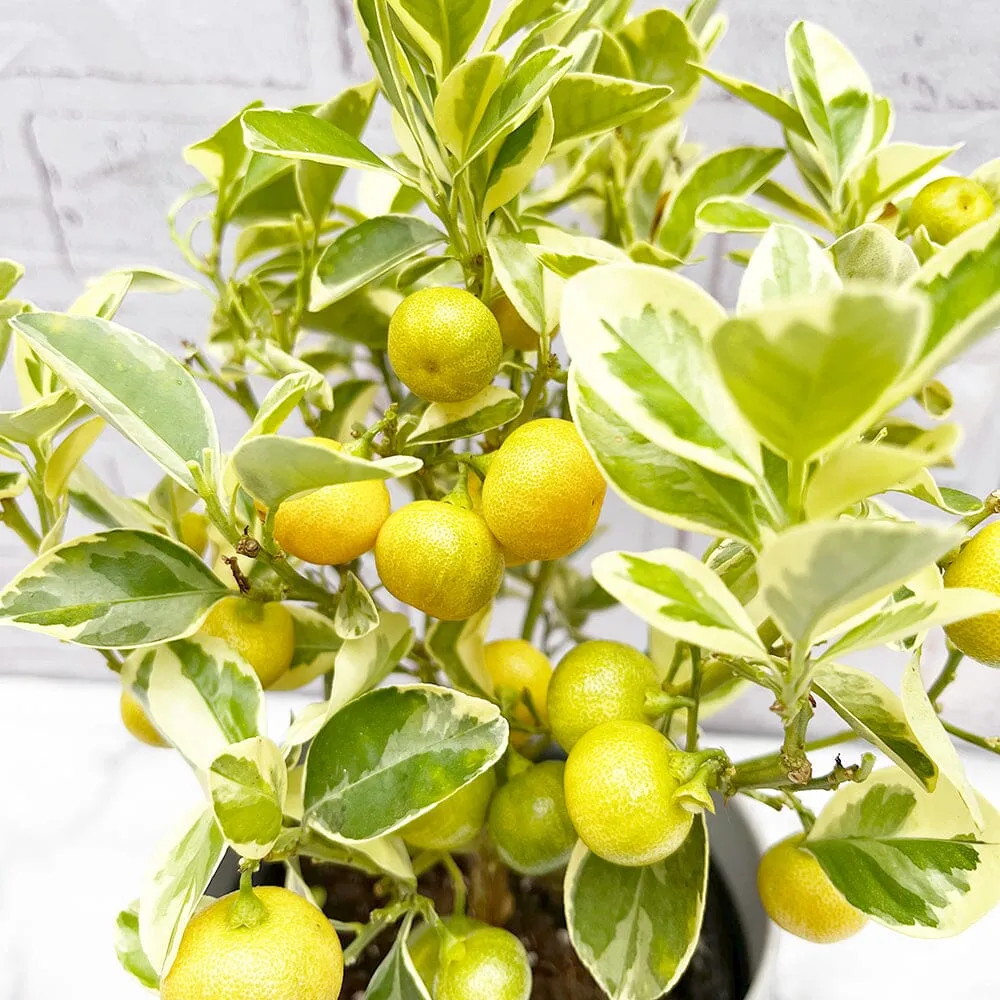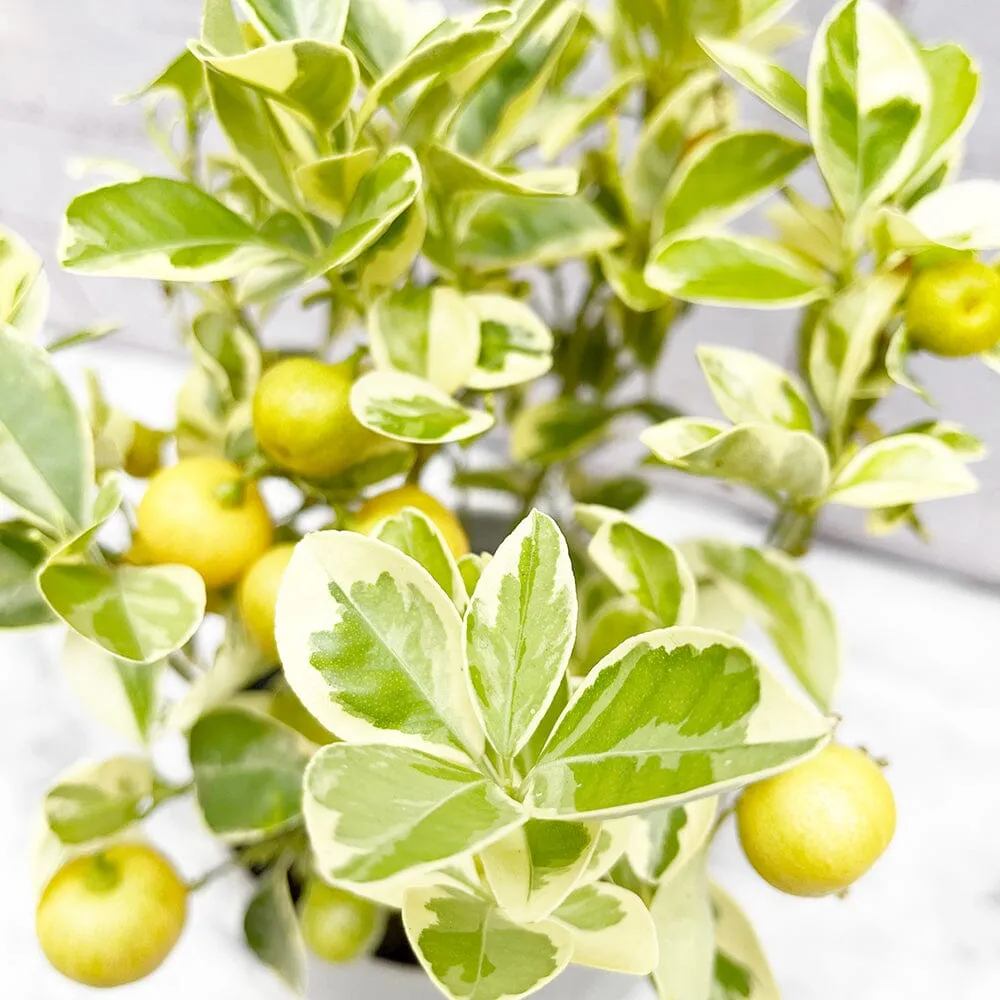The Calamondin Tree (Citrofortunella microcarpa) is a small citrus tree that produces small, sour oranges that are often used for cooking and making marmalades. Here are some tips for caring for your Calamondin Tree:
Light: Calamondin trees require bright, direct sunlight for at least 6 hours a day. If you're keeping it indoors, make sure it's close to a window that gets a lot of natural light.
Water: Keep the soil evenly moist, but be careful not to overwater. Water your Calamondin tree deeply when the top inch of soil feels dry to the touch, and allow any excess water to drain away.
Humidity: Calamondin trees prefer high humidity, so consider placing a humidifier nearby or misting the leaves regularly to increase humidity.
Temperature: Calamondin trees prefer warm temperatures between 60°F to 85°F (16°C to 29°C), but can tolerate cooler temperatures down to 50°F (10°C).
Soil: Calamondin trees prefer well-draining soil that is slightly acidic. You can use a mixture of peat moss, perlite, and sand to create a suitable soil mix.
Fertilizer: Feed your Calamondin tree with a balanced, slow-release fertilizer every 4-6 weeks during the growing season (spring and summer). Use a fertilizer specifically formulated for citrus trees.
Pruning: You can prune your Calamondin tree to maintain its size and shape, as well as to encourage new growth. Prune off any dead or damaged branches, and make cuts just above a leaf node.
Calamondin trees are fairly easy to care for and can be grown both indoors and outdoors. They can also be grown as bonsai trees. With proper care, your Calamondin tree can produce delicious, sour oranges for many years to come.

















